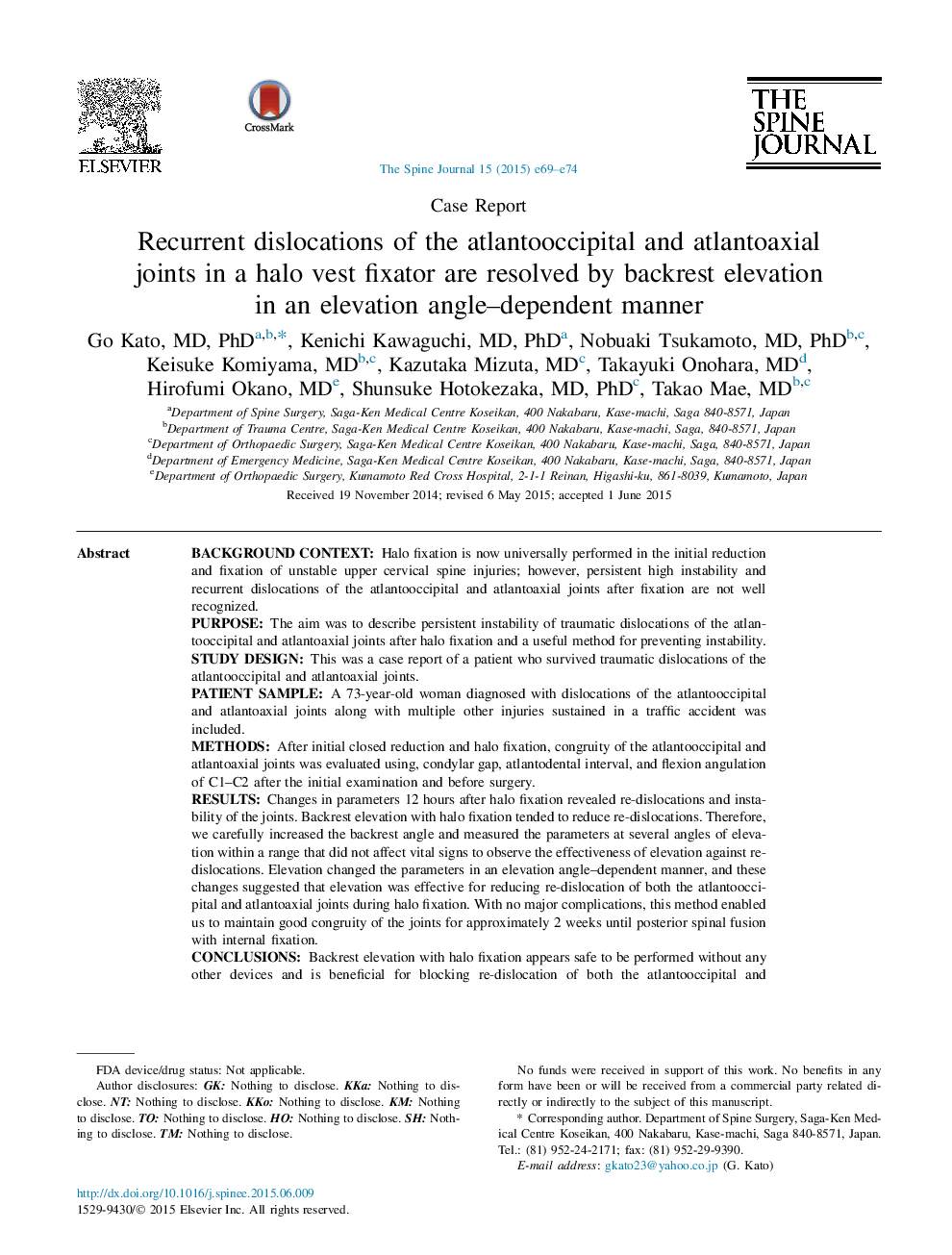| کد مقاله | کد نشریه | سال انتشار | مقاله انگلیسی | نسخه تمام متن |
|---|---|---|---|---|
| 6212163 | 1268566 | 2015 | 6 صفحه PDF | دانلود رایگان |

Background contextHalo fixation is now universally performed in the initial reduction and fixation of unstable upper cervical spine injuries; however, persistent high instability and recurrent dislocations of the atlantooccipital and atlantoaxial joints after fixation are not well recognized.PurposeThe aim was to describe persistent instability of traumatic dislocations of the atlantooccipital and atlantoaxial joints after halo fixation and a useful method for preventing instability.Study designThis was a case report of a patient who survived traumatic dislocations of the atlantooccipital and atlantoaxial joints.Patient sampleA 73-year-old woman diagnosed with dislocations of the atlantooccipital and atlantoaxial joints along with multiple other injuries sustained in a traffic accident was included.MethodsAfter initial closed reduction and halo fixation, congruity of the atlantooccipital and atlantoaxial joints was evaluated using, condylar gap, atlantodental interval, and flexion angulation of C1-C2 after the initial examination and before surgery.ResultsChanges in parameters 12 hours after halo fixation revealed re-dislocations and instability of the joints. Backrest elevation with halo fixation tended to reduce re-dislocations. Therefore, we carefully increased the backrest angle and measured the parameters at several angles of elevation within a range that did not affect vital signs to observe the effectiveness of elevation against re-dislocations. Elevation changed the parameters in an elevation angle-dependent manner, and these changes suggested that elevation was effective for reducing re-dislocation of both the atlantooccipital and atlantoaxial joints during halo fixation. With no major complications, this method enabled us to maintain good congruity of the joints for approximately 2 weeks until posterior spinal fusion with internal fixation.ConclusionsBackrest elevation with halo fixation appears safe to be performed without any other devices and is beneficial for blocking re-dislocation of both the atlantooccipital and atlantoaxial joints as well as possible secondary damage to the upper cervical spinal cord during the external fixation period.
Journal: The Spine Journal - Volume 15, Issue 10, 1 October 2015, Pages e69-e74